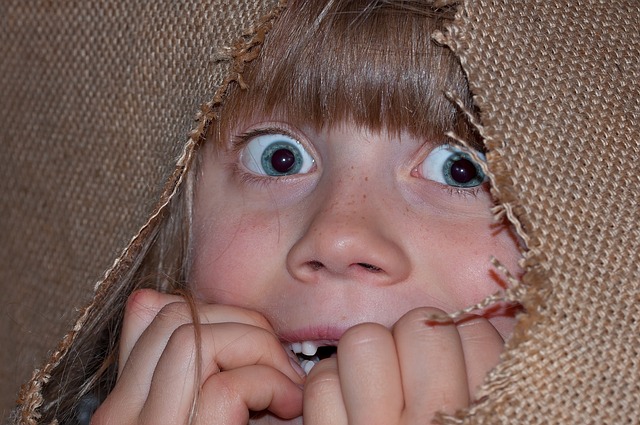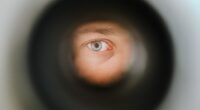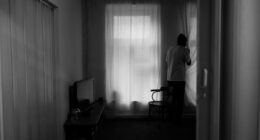Agoraphobia and social anxiety are both disorders that can be extremely difficult to manage and require specialized treatment. Agoraphobia is typically associated with a fear of open spaces or public places while social anxiety disorder involves an intense fear of embarrassing oneself in front of others.
What is agoraphobia?
(Image by Karan Kwatra from Pixabay )

Agoraphobia is an anxiety disorder that is characterized by a fear of environments that may trigger a panic attack. People with agoraphobia often avoid public places, such as crowded areas, enclosed spaces, or situations where escape might be difficult.
Agoraphobia can develop from a number of different experiences, including a traumatic event or a series of Panic Attacks. The disorder can also run in families, which suggests that there may be a genetic component.
What is social anxiety?
(Image by Petra from Pixabay )

It’s normal to feel nervous in social situations, but for people with social anxiety disorder (SAD), these feelings are more than just nerves. They’re intense, overwhelming, and can last long after the event is over. People with SAD often worry about being judged or evaluated negatively by others, so they avoid situations where they might be exposed to scrutiny. This can make it hard to go to work or school, shop in a store, or even eat in a restaurant.
Most people with SAD also have specific phobias, such as a fear of public speaking or performing. These intense fears can cause avoidance behaviors that can seriously interfere with work, school, and social life.
The difference between agoraphobia and social anxiety
Agoraphobia and social anxiety are two different types of anxiety disorders. Agoraphobia is an intense fear of being in situations where escape might be difficult or help might not be available if needed, such as being in a crowd, on a bridge, or in an elevator. Social anxiety is a fear of social situations where one may feel embarrassed, judged, or rejected.
The causes of agoraphobia and social anxiety
Agoraphobia and social anxiety are both types of anxiety disorders. Agoraphobia is an intense fear of having a panic attack in a public place, while social anxiety is an intense fear of being judged or rejected by others. Both conditions can cause people to avoid situations that trigger their symptoms.
There are several possible causes of agoraphobia and social anxiety, including genetics, brain chemistry, and early life experiences. Some people may be more prone to these disorders due to family history or other factors. Additionally, traumatic events or major life changes can trigger the development of agoraphobia or social anxiety.
The symptoms of agoraphobia and social anxiety
Agoraphobia is an anxiety disorder that results in a person feeling extreme fear or anxiety in situations where they feel like they might not be able to escape or get help if something bad were to happen. People with agoraphobia often avoid places or situations where they might feel trapped, such as being in a crowd, traveling on a bus or plane, or being in an elevator.
Social anxiety disorder (SAD) is an excessive and persistent fear of social situations and of being embarrassed, humiliated, or judged by others. People with SAD often avoid social situations, such as parties, events, and meetings. They may also have difficulty talking to people, making eye contact, or eating in front of others.
The treatment for agoraphobia and social anxiety
There are many treatments available for agoraphobia and social anxiety. The most common and effective treatment for agoraphobia is exposure therapy. Exposure therapy involves gradually exposing the person to the situations they fear, starting with the least feared situation and working up to the most feared. The therapist will help the person to cope with their anxiety during exposure therapy. Social anxiety can be treated with medication, cognitive-behavioral therapy, or a combination of both.
Is social anxiety a form of agoraphobia?
Most people with social anxiety do not have agoraphobia, and most people with agoraphobia do not have social anxiety. However, it is possible to have both conditions.
People with social anxiety tend to be anxious about specific situations, such as public speaking or meeting new people. They may worry about being judged or embarrassed in front of others. People with agoraphobia are afraid of being in situations where they might feel trapped, helpless, or embarrassed. They may avoid public places, such as shopping malls or crowded streets.
Agoraphobia can develop out of a fear of having a panic attack in a public place. People with agoraphobia often have a history of panic attacks or know someone who does. Social anxiety does not usually lead to agoraphobia, but it can be a contributing factor.
How do I know if I’m agoraphobic?
The answer to this question is not always so simple, as agoraphobia can manifest in a variety of ways. However, there are some tell-tale signs that may indicate you are struggling with agoraphobia. For example, do you find yourself avoiding situations or places that trigger anxiety? Do you experience panic attacks or feel excessively anxious in crowds or when leaving the safety of your home?
If you answered yes to any of the above questions, it’s possible that you are agoraphobic. The best way to know for sure is to consult with a mental health professional who can properly diagnose and treat your condition.
Can anxiety turn into agoraphobia?
Anxiety can sometimes develop into agoraphobia, which is a type of anxiety disorder characterized by a fear of situations or places that may be difficult to escape or where help may not be readily available. Agoraphobia can develop gradually over time, often as a result of experiencing panic attacks or other intense anxiety symptoms in certain situations.
For example, someone who has a panic attack while in a crowded shopping mall may begin to associate the mall with the intense feelings of panic and anxiety. Over time, the fear of experiencing another panic attack may cause them to avoid the mall altogether, which can then lead to avoiding other crowded places or situations.
Agoraphobia can significantly impact a person’s daily life and make it difficult to carry out routine activities, such as going to work or school, running errands, or socializing with friends and family. However, it is treatable with the help of a mental health professional.
Treatment for agoraphobia often involves a combination of therapy, medication, and lifestyle changes. Cognitive-behavioral therapy (CBT) is a common type of therapy used to treat agoraphobia, which focuses on helping the person identify and change negative thoughts and beliefs that contribute to their anxiety. Medications, such as antidepressants and anti-anxiety medications, may also be prescribed to help manage symptoms. Lifestyle changes, such as practicing relaxation techniques and gradually facing feared situations, can also be helpful in managing symptoms of agoraphobia.
How does agoraphobia begin?
There is no single cause of agoraphobia, but it is believed to develop as a result of a combination of genetic and environmental factors. Some people may be more likely to develop agoraphobia if they have a family history of anxiety disorders. Additionally, certain traumatic events or life experiences (such as being in a car accident) can trigger the development of agoraphobia.
What are the types of social anxiety?
Social anxiety disorder (SAD), also known as social phobia, is a type of anxiety disorder characterized by an intense fear of social situations. There are several types of social anxiety that a person may experience:
- Performance anxiety: This type of social anxiety is related to fear of performing in front of others, such as giving a speech, performing on stage, or participating in sports.
- Interaction anxiety: This type of social anxiety is related to fear of social interaction, such as having conversations with others, meeting new people, or attending social events.
- Observation anxiety: This type of social anxiety is related to fear of being observed or judged by others, such as eating in public, using public restrooms, or writing in front of others.
- Generalized social anxiety: This type of social anxiety is not limited to a specific situation and involves fear and anxiety in a wide range of social situations.
Social anxiety can vary in severity and may impact different areas of a person’s life. Some people may only experience mild social anxiety symptoms in certain situations, while others may have more severe symptoms that significantly impact their daily life. A mental health professional can help diagnose and treat social anxiety disorder.








